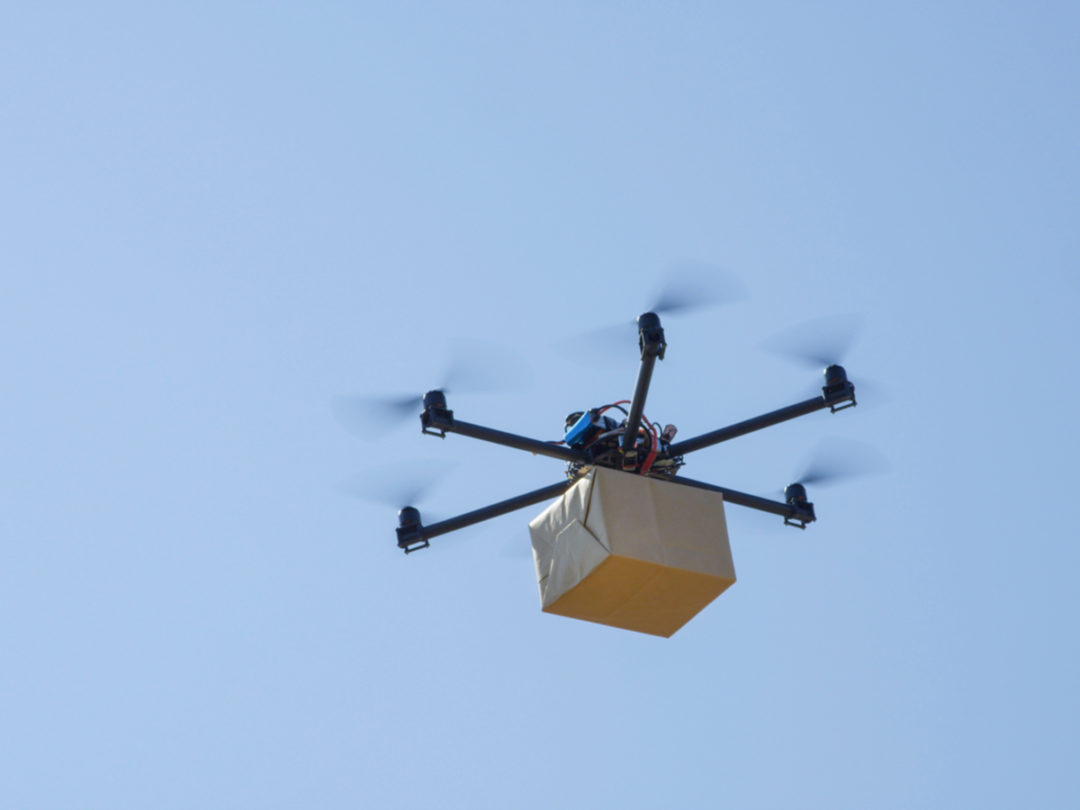
Across all industries, drones were a top disruptor in 2018.
In the consumer sector, drones are revamping photography and providing a new hobby, among other uses. In the commercial sector, applications of drones are extensive, focusing on a variety of functions and industries. Equipped with enhanced functionality such as flight planning, GPS mapping, sensor technology, larger carrying capabilities and precise controls, drones can help make operations more efficient, less expensive and safer for workers.
While drone usage remains a future strategy for some industries, commercial drones are ready for the transportation and logistics industry, and are about to revolutionize the industry today. PwC estimates drone services to be worth over $127bn globally, with the market for the drone-powered transport industry about $13bn alone.
Why will this technology be so impactful for the industry? It all comes down to the data intelligence it provides.
While the ability to communicate and share information between workers in real time is essential to organizational success in any industry, manual inventory data-collection processes are why the transportation and logistics industry continues to suffer from inefficient, expensive, unsafe and unreliable processes. By replacing manual processes with drone technology, powered by purpose-built, enterprise mobile devices (the true brains behind the operation), companies can extend real-time communication and data-sharing capabilities with workers to optimize productivity and profitability and, ultimately, remain competitive over the long term.
Here are some key ways in which drone technology is enhancing operations, and revolutionizing the transportation and logistics industry.
Optimizing worker productivity and business profitability
For transportation and logistics, efficiency is the name of the game. However, in a fast-paced industry that relies on the data-collection efforts of workers, the industry is riddled with manual inventory-collection methods. They cause significant delays in productivity and overall business profitability, creating the need for a solution that can optimize operations.
For this reason, and due to their highly efficient data-capture ability, drones are being deployed throughout the transportation and logistics industry. In addition, integrating a drone’s data-capture functionality with real-time mobile communications and information-sharing capabilities improves efficiency and accelerates value.
In yesterday’s manual world, inventory management relied on the data-collection efforts of a full team of forklift operators, scanning technologies and technicians. When collecting inventory data from a 50-foot-high rack of pallets, a forklift operator was responsible for lifting colleagues up incremental measurements of a pallet to allow technicians to manually scan the materials. This process was then repeated for each rack in the warehouse before sharing a full audit with management.
As you can imagine, this was a labor intensive and time-consuming process, which not only delayed the overall inventory-collection process but also impacted the bottom line due to high labor costs.
In today’s digital world, by coupling the power of drone technology with mobile-enabled applications, inventory identification can quickly and seamlessly be completed by one operator. Using a mobile tablet, an operator can pre-plan a drone’s flight to fly around the warehouse and collect data from each pallet through its radio frequency identification (RFID) and barcode-scanning readers. Once the data is collected, the drone and mobile-enabled solution immediately send the data to the company’s warehouse management software (WMS) system, allowing for the efficient management of each parcel from entrance to exit.
Reliability and functionality under operational duress
Whether managing inventory in the warehouse or tracking assets within a yard, workers in the transportation and logistics industry are subject to a variety of risks and demanding circumstances. From varying and sometimes extreme environmental conditions to workplace safety hazards and operational disruption, businesses must consider how they’re equipping workers with the tools they need to remain in control of their work. By deploying drones throughout the workforce, companies can maximize the capabilities of human capital and provide the tools and applications needed to efficiently get the job done, even under duress.
In the distribution center or warehouse yard, managers, dispatchers and drivers want to know where all of their assets are in real time.
To help manage trailers, yard trucks, shuttle trucks, tractors, drivers, shipping containers and equipment, drones can be pre-planned to survey the yard, collect inventory and share all collected data with an organization’s yard management system (YMS), which is fully accessible via an operator’s mobile device. This not only equips managers with real-time visibility, but also enables crews to sustain operations even when disruptions occur.
When interruptions threaten the supply chain, yesterday’s manual processes force crews to spend hours searching for the point of contention, often requiring a shutdown of operations. But in today’s digital world, the point of disruption can be identified within minutes using drone technology. Because drones can survey yards from high altitudes and hard-to-reach locations, they can monitor and locate the specific asset or vehicle causing the disruption and, in turn, notify repair crews through their mobile devices to correct the point of interruption before a shutdown becomes necessary.
In the yard, the use of mobile devices to control commercial drones is critical to achieving peak performance. The devices need to be able to withstand adverse conditions such as rain, snow, extreme temperatures, dust and dirt, as well as frequent bumping or dropping. Because real-time communication is a key benefit of utilizing drones, it’s essential that they be paired with rugged mobile devices, so that workers remain in control of the situation regardless of the environment.
In an industry currently bogged down by antiquated processes, the operational benefits of deploying drone technology are endless.
Chad Hall is strategic account manager of enterprise mobility solutions for Panasonic.







